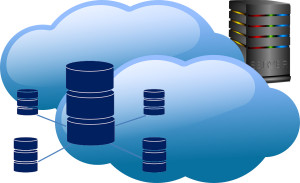 With so many options for data storage and hosted or on-premises solutions, how does a business choose the right one?
With so many options for data storage and hosted or on-premises solutions, how does a business choose the right one?
Deciding how and whether to use cloud computing isn’t a simple flip of a coin. It’s made all the more complicated by an overwhelming number of vendors and products. After years of deploying each method – on premise, cloud, hybrid or multi-cloud – and then evaluating which worked and which didn’t, experts have deciphered what situations tip the scale toward one approach or another. While the context is data storage, this analysis applies to most enterprise IT scenarios.
Choose on-premises architectures when:
Security is an emotional subject. Security considerations are always paramount, but some sectors have a gut level reaction to the cloud, and the decision stops there, period. For example, if the sheriff deploying a body worn camera application fears the team could not demonstrate a chain of custody over digital evidence in a cloud-based architecture — meaning evidence becomes inadmissible in court — it’s difficult to beat the peace-of-mind of an on-premise deployment where blinking lights on the hardware holding the team’s photos, documents, and videos are in full view, and typically within a locked cage.
Governance rules are tricky. Beyond HIPAA and PCI compliance – and other modern data sovereignty practices – when IT architectures in a vertical sector must demonstrate physical as well as virtual control over data at all times, an on-premise paradigm may be easier to comprehend. Ditto if rules dictate aligning a data retirement schedule with a complex lease or CapEx decommissioning schedule.
Legacy applications are immovable. Most applications are available either in the cloud or on-premise, but some legacy software has licensing restrictions or proprietary dependencies that preclude cloud usage – making on-premise or hybrid deployment a requirement.
Migration size and time are formidable. Although the track record of organizations who have successfully moved multi-petabyte deployments to the cloud is impressive, even dark fiber lines can’t fully ameliorate the time and hassle associated with an on-premise to cloud migration. Nor can some legacy gear be readily migrated to a cloud modality. Sometimes it’s just more time- and cost-effective to retain certain applications and storage assets on premise, move other applications to the cloud, and frame a hybrid infrastructure uniting them.
Choose cloud architectures when:
There is significant or uncertain growth ahead. Cloud deployments provide more flexibility to “walk before you run” by getting things right on a smaller scale, and then scaling from there.
A variable business demands flexibility. For example, if one location is planned for a cloud rollout first, or one business unit experiences dramatic seasonal variability, a cloud architecture makes it easy for IT teams to move in an agile fashion with the ebb and flow of today’s dynamic business models. This is particularly true when the business itself is a software-as-a-service offering with its inherent variability.
You want an “oh, no!” button. The DevOps philosophy of rapid rollout then continuous iteration is permeating more than just test and dev teams. That said, sometimes a major correction quickly becomes evident. Cloud-enabled architectures are far more malleable and enable IT organizations to morph the deployment at will, providing a safety measure.
It’s time for radical change. In addition to the well-publicized cost and agility advantages of the cloud, changing from on-premise to cloud infrastructures has wide-reaching impact on networks, bandwidth, real estate and more. The cloud’s agility and breadth of on-demand services enable teams to make more changes with less effort and over a shorter period of time.
Choose traditional CapEx purchases when:
There’s a Use-It-Or-Lose-It budget situation. If you simply can’t get funding any other way than a CapEx appropriation – the choice is made. Market research by IDC, 451 Research and others confirms this approach is steadily waning.
Choose As-a-Service options when:
The organization values agility. In late 2016 IDC FutureScape predicted that 80% of enterprise IT offerings would be sourced on a pay as you consume, OpEx model. The guidance was prescient given that by the fall 2016, at least seven major vendors had debuted On Premise, As a Service options, reiterating that it is a fundamental shift in how enterprise IT is delivered. Following the success of Amazon Web Services (AWS) – from $0 in2006 to almost $8 billion business ten years later, and the dominant force among hyperscale cloud providers with nearly 3x larger than its next largest competitor, the OpEx solutions concept has spread through networking, security and storage sectors. As vendors watch customer adoption, industry analysts have predicted additional OpEx-solution shifts.
IT resources are limited. As-a-service offerings put the vendor in charge of operation, maintenance and upgrades. It’s easy scaling up – and equally importantly, scaling down – and letting those who know the most about the product hassle with the mundane details. This frees IT teams to focus on their core deliverables that accelerate the business and avoids being stuck with the wrong equipment, and wasting time on low-value, high-effort tasks. It allows them to respond to business demands promptly, with a right-sized architecture. Doing this can allow IT teams to effectively deliver infrastructure for a new application without delay and without having to free up purchasing budgets for it.
Projecting future demand is uncertain. For example, with data storage, most organizations don’t accurately know their requirements in 3- to 5-years – they’re lucky to know it one-year out. OpEx approaches enable the team to test before they buy, and instead of worrying about right-sizing storage today, focus on selecting a solution that meets today’s needs, has the ability to scale to at least an order of magnitude greater than the largest envisioned deployment, and has the elasticity to scale both up and down.
Your product or solution is an As a Service offering. Software application providers and service providers alike are better able to manage costs and profit margins if they can continually match their infrastructure footprint to the ebb and flow of their subscriber base – without hefty carrying costs, rollout logistics and bloated overhead from over-provisioning.
By Noam Shendar for NetworkWorld.com | Photo: Pixabay

0 Comments